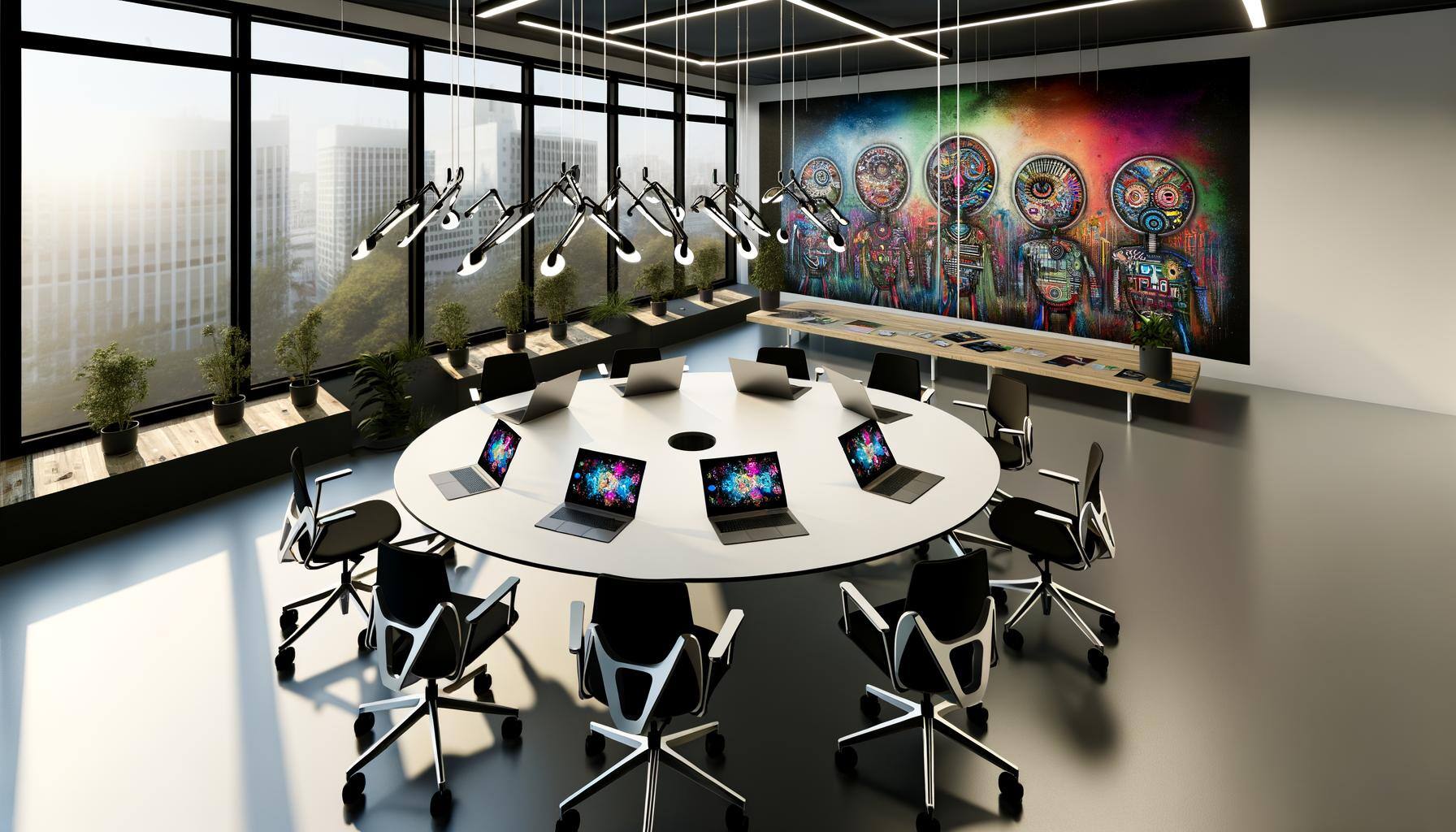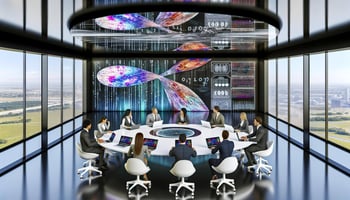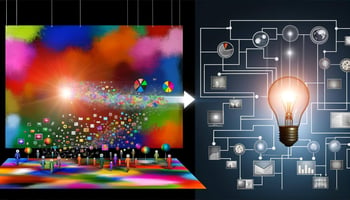Reimagining IT as a Creative Canvas In the fast-paced digital era, businesses are continuously...
Transforming IT Strategy Through Artistic Innovation

The Intersection of Art and IT: A New Paradigm
In today's dynamic digital world, the fusion of art and technology is creating a groundbreaking paradigm shift in the realm of IT architecture and design. Traditionally, IT has been viewed through a technical lens, focused primarily on functionality and efficiency. However, as businesses strive for innovation and agility, there is a growing recognition of the profound impact that artistic principles can have when integrated into IT strategies.
Art, with its emphasis on creativity, emotion, and storytelling, offers a fresh perspective that can transform how IT systems are conceived and implemented. By adopting an artistic mindset, IT professionals can break free from conventional boundaries, fostering an environment of innovation and experimentation. This new paradigm not only enhances the aesthetic appeal of technology but also improves its functionality and user engagement.
The intersection of art and IT is not merely about embellishing technology with artistic elements. It is about reimagining the entire process of IT architecture and design as a form of artistic expression. This approach encourages a holistic view of technology, where creativity and logic coexist to create solutions that resonate on both intellectual and emotional levels.
Redefining IT Architecture as a Creative Process
In the rapidly evolving technological landscape, the traditional boundaries of IT architecture are becoming increasingly blurred. By redefining IT architecture as a creative process, businesses can unlock new opportunities for innovation and growth. This creative approach involves viewing IT systems not just as technical necessities but as canvases for artistic expression.
When IT professionals approach system design with an artistic lens, they are encouraged to think outside the box and explore unconventional solutions. This mindset leads to the development of unique and innovative systems that are both functional and aesthetically pleasing. By incorporating elements of art, such as imagination and experimentation, into IT architecture, businesses can foster a culture of creativity and adaptability.
The creative process in IT architecture involves breaking down complex technical challenges into more manageable and intuitive solutions. By applying artistic principles such as composition, balance, and storytelling, IT professionals can design systems that are cohesive and engaging. This holistic approach not only enhances the user experience but also improves the overall efficiency and effectiveness of the technology.
Leveraging Artistic Expression for System Design
Artistic expression in system design goes beyond mere aesthetics; it is about creating systems that inspire and empower users. By leveraging artistic principles, IT architects can design systems that are intuitive, adaptable, and user-centric. This approach fosters a deeper connection between the user and the technology, leading to increased satisfaction and productivity.
One way to incorporate artistic expression into system design is through the use of metaphor and narrative. By viewing a system as a story, designers can create a more cohesive and engaging experience for users. This narrative approach helps users understand and navigate complex systems by providing context and meaning to their interactions.
Moreover, by designing systems that are adaptable and flexible, businesses can respond more quickly to changing needs and opportunities, enhancing their overall agility and competitiveness. Artistic expression encourages a mindset of continuous improvement and innovation, ensuring that IT systems remain relevant and effective in an ever-changing technological landscape.
Case Studies: Success Stories in Artistic IT Solutions
Several companies have successfully integrated artistic principles into their IT strategies, achieving remarkable results. These success stories serve as powerful examples of how art-inspired IT solutions can drive business success and innovation.
One such example is a boutique IT consultancy firm that reimagined their system architecture as a dynamic, ever-evolving artwork. By doing so, they were able to create a more agile and responsive IT infrastructure, resulting in increased efficiency and reduced costs. This artistic approach allowed the firm to stay ahead of the competition by quickly adapting to changing market demands.
Another example is a global technology company that used principles of minimalist art to streamline their user interface design. By focusing on simplicity and clarity, they were able to enhance user satisfaction and reduce training costs. This approach not only improved the user experience but also increased the overall efficiency of their systems.
These case studies demonstrate the power of art-inspired IT solutions to drive business success. By embracing artistic principles, organizations can create systems that are not only functional but also innovative and inspiring.
Enhancing User Experience Through Art-Inspired Interfaces
User experience (UX) is a critical component of any IT strategy, and incorporating artistic elements into interface design can significantly enhance UX. Art-inspired interfaces are more than just visually appealing; they are designed to engage users on an emotional and intellectual level.
The principles of art, such as color theory, composition, and visual storytelling, can be used to create interfaces that are intuitive and engaging. By carefully considering the aesthetic elements of an interface, designers can create a more seamless and enjoyable user experience. This approach not only improves user satisfaction but also increases the overall effectiveness of the technology.
Art-inspired interfaces also encourage a deeper connection between the user and the technology. By creating a visually appealing and emotionally resonant interface, businesses can foster a sense of loyalty and trust among users. This connection is crucial for building long-term relationships with customers and ensuring the success of IT systems.
Maximizing Business Agility with Creative IT Strategies
In today's fast-paced business environment, agility is key to success. By adopting creative IT strategies, businesses can enhance their agility and responsiveness, enabling them to seize new opportunities and navigate challenges with ease. Artistic expression in IT can play a crucial role in fostering this agility.
Creative IT strategies involve rethinking traditional approaches to system design and implementation. By embracing an artistic mindset, organizations can develop more flexible and adaptable IT solutions that can quickly respond to changing needs and opportunities. This approach encourages experimentation and innovation, leading to the development of more effective and efficient systems.
By integrating artistic principles into their IT strategies, businesses can create a more agile and responsive IT infrastructure, enabling them to thrive in an increasingly competitive and dynamic market. This agility is essential for staying ahead of the competition and ensuring long-term business success.
The Role of Innovative Tools in Artistic IT Execution
Innovative tools play a crucial role in executing artistic IT strategies. Advanced technologies, such as artificial intelligence and machine learning, can be leveraged to create more sophisticated and responsive systems. These tools enable IT professionals to experiment with new ideas and approaches, leading to the development of more innovative and effective solutions.
For example, AI-powered design tools can help IT architects explore new design possibilities and create more intuitive and engaging user interfaces. Machine learning algorithms can be used to optimize system performance and enhance user experience, resulting in more efficient and effective IT solutions.
By embracing innovative tools, businesses can unlock new possibilities for artistic expression in IT, leading to the development of more creative and effective systems. These tools not only enhance the capabilities of IT professionals but also enable businesses to stay ahead of the curve in an ever-evolving technological landscape.
Overcoming Challenges in Artistic IT Implementation
While the integration of artistic principles into IT strategies offers significant benefits, it also presents unique challenges. One of the primary challenges is balancing artistic expression with technical requirements. IT professionals must ensure that their artistic vision does not compromise the functionality and reliability of the system.
Another challenge is managing the complexity of artistic IT solutions. Artistic expression often involves experimentation and iteration, which can lead to increased complexity and risk. IT professionals must carefully manage this complexity to ensure the successful implementation of artistic IT solutions.
To overcome these challenges, businesses must foster a culture of collaboration and innovation. By encouraging open communication and collaboration between IT and creative teams, organizations can develop more cohesive and effective IT solutions. Additionally, by prioritizing user-centric design and focusing on the needs and expectations of users, businesses can create systems that are both artistic and functional.
In conclusion, the integration of artistic principles into IT strategies represents a transformative opportunity for businesses. By embracing creativity and innovation, organizations can develop more effective and inspiring IT solutions that drive business success. As technology continues to evolve, the role of art in IT will only become more significant, paving the way for a future where technology and art coexist in harmony.



